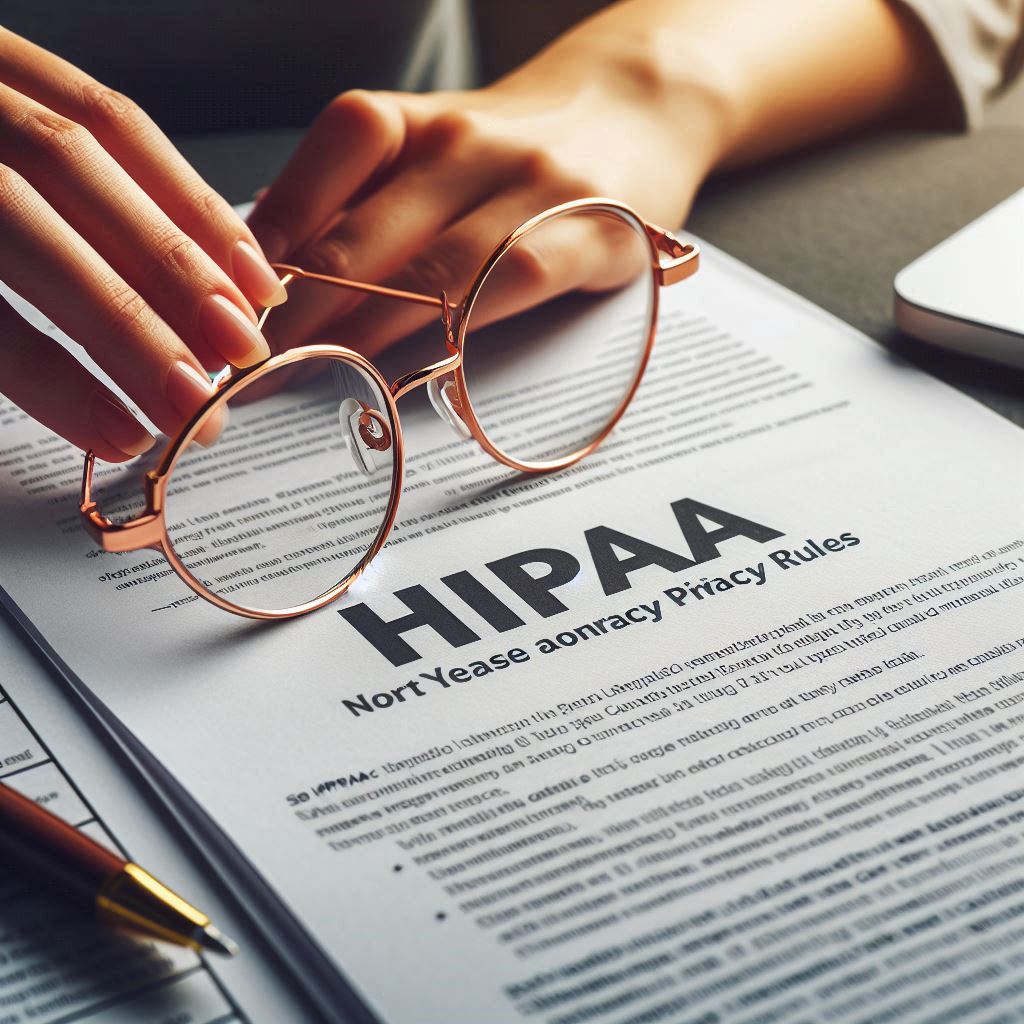HIPAA Compliance


The Evolution of HIPAA
HIPAA was enacted with the dual purpose of modernizing healthcare information management and protecting personally identifiable information. Initially, the primary focus was to streamline the flow of healthcare information while protecting patients’ rights to privacy. Over time, the introduction of the Privacy Rule and the Security Rule provided a structured approach to safeguard sensitive patient health information. Key components of HIPAA compliance include protecting PHI, adhering to Privacy and Security Rules, and understanding the requirements imposed on covered entities and business associates.
The Importance of HIPAA Compliance in Healthcare
The Health Insurance Portability and Accountability Act (HIPAA) stands as a crucial pillar in safeguarding patient privacy within the United States healthcare system. Enacted in 1996, HIPAA establishes federal regulations to ensure healthcare providers, health plans, and their business associates manage protected health information (PHI) with the highest standards of confidentiality, security, and accessibility. Ensuring HIPAA compliance is essential for maintaining patient trust, protecting sensitive medical information, and avoiding substantial penalties for non-compliance.
Why HIPAA Compliance Matters
The advent of electronic health records (EHRs) and digital healthcare technologies has exponentially increased the vulnerability of patient data. HIPAA compliance mitigates these risks by mandating organizations to implement robust safeguards against unauthorized access, disclosure, or misuse of PHI. This is crucial not only for maintaining patient trust but also for ensuring the overall integrity of the healthcare system.
Ensuring HIPAA compliance means that healthcare organizations are taking the necessary steps to protect sensitive patient information. This protection is vital in an era where data breaches and cyber-attacks are becoming increasingly common. Without these safeguards, patients’ private information could be exposed, leading to identity theft, financial loss, and other serious consequences. Moreover, the healthcare industry relies heavily on trust; patients must feel confident that their personal health information is being handled with care and confidentiality.
Who Must Comply with HIPAA?
HIPAA regulations apply to two primary categories of entities:
Covered Entities: These include organizations directly involved in healthcare delivery or administration, such as hospitals, clinics, doctors, dentists, and health plans.
Business Associates: These are third-party vendors that access PHI on behalf of covered entities. Examples include billing companies, EHR vendors, and IT service providers.
Understanding HIPAA Rules
HIPAA compliance is governed by two fundamental rules that outline specific requirements:
HIPAA Privacy Rule: This rule establishes national standards to protect patient privacy by limiting access to PHI and setting guidelines for its use and disclosure. It delineates circumstances under which PHI can be shared without patient consent, such as for treatment, public health initiatives, or law enforcement investigations.
HIPAA Security Rule: Focused on electronic PHI (ePHI), this rule mandates technical, physical, and administrative safeguards to protect sensitive information.
These safeguards include:
Administrative Safeguards: Policies and procedures to manage ePHI security risks, conduct risk assessments, train employees, and develop breach notification plans.
Physical Safeguards: Measures to restrict physical access to facilities where ePHI is stored, including security systems, workstation security protocols, and proper disposal procedures for electronic media.
Technical Safeguards: Technological solutions like data encryption, user authentication with multi-factor options, and audit controls to monitor system activity.
The Seven Elements of an Effective HIPAA Compliance Program
The U.S. Department of Health and Human Services (HHS) Office of Inspector General (OIG) recommends a framework comprising seven elements to establish a robust HIPAA compliance program. These elements serve as benchmarks for organizations to evaluate their compliance efforts:
Written Policies and Procedures: Documented policies ensure consistency and adherence to HIPAA regulations.
Compliance Officer and Committee: Appointing a compliance officer and committee signifies an organization’s commitment to HIPAA compliance and provides oversight and guidance.
Effective Training and Education: Regular employee training on HIPAA requirements and best practices for data security fosters awareness and a culture of compliance.
Communication Channels: Clear communication channels allow employees to report potential HIPAA violations or raise concerns about data security practices.
Internal Monitoring and Auditing: Regular audits help identify vulnerabilities in security measures and ensure adherence to established policies.
Disciplinary Guidelines: Well-publicized disciplinary procedures deter non-compliance and reinforce the importance of data security.
Prompt Response and Corrective Action: Organizations must promptly address any detected HIPAA violations and implement corrective actions to prevent future occurrences.
Physical and Technical Safeguards for HIPAA Compliance
Implementing physical and technical safeguards is essential for maintaining HIPAA compliance. Physical safeguards involve measures to limit facility access, enforce workstation security protocols, and manage the handling of electronic media. Technical safeguards encompass access control mechanisms, audit reports, integrity controls, disaster recovery plans, offsite backups, and network security measures. These safeguards ensure the confidentiality, integrity, and availability of ePHI, protecting it from unauthorized access or data breaches.
Physical safeguards include controlled access to buildings and specific areas where ePHI is stored. For example, security personnel, access badges, and surveillance systems can help prevent unauthorized individuals from gaining physical access to sensitive areas. Workstation security policies can include screen privacy filters and automatic logoff mechanisms to ensure that unattended workstations do not become points of unauthorized access.
Technical safeguards involve advanced technologies designed to protect ePHI. Data encryption ensures that even if data is intercepted, it cannot be read without the proper decryption key. Multi-factor authentication requires users to provide two or more verification factors to gain access, adding an extra layer of security beyond just a password. Audit controls and monitoring systems track who accesses ePHI and what changes are made, providing a way to detect and respond to suspicious activities promptly.
Supplemental Measures for HIPAA Compliance
The Health Information Technology for Economic and Clinical Health (HITECH) Act enhances HIPAA regulations by increasing penalties for violations and addressing the growing use, storage, and transmission of electronic health information. Compliance with both HIPAA and HITECH regulations underscores the importance of robust data security measures to protect PHI.
HITECH specifically targets the expansion of health information technology and aims to improve healthcare delivery through the use of EHRs. It mandates stricter enforcement of HIPAA rules, ensuring that organizations adopt more comprehensive measures to safeguard ePHI. The act also introduces higher penalties for non-compliance, which can range from $100 to $50,000 per violation, depending on the level of negligence and the severity of the breach. These penalties highlight the critical nature of maintaining robust security measures and ongoing compliance efforts.
Data Protection for Healthcare Organizations
Data security is paramount for healthcare organizations to meet regulatory requirements and protect PHI. A comprehensive data protection strategy ensures the security and availability of PHI, compliance with HIPAA and HITECH regulations, and greater visibility and control over sensitive data. Effective solutions safeguard patient data in various formats and facilitate secure data sharing among healthcare providers.
To protect PHI, healthcare organizations must implement layered security strategies that cover all aspects of data handling, from collection and storage to transmission and disposal. Encryption of data both at rest and in transit is a fundamental practice. Regularly updating and patching software systems helps protect against known vulnerabilities that could be exploited by cyber attackers.
Additionally, healthcare organizations should adopt advanced security measures such as intrusion detection systems, which monitor network traffic for suspicious activity, and endpoint protection solutions that secure devices accessing the network. Regular security assessments and vulnerability scans are crucial for identifying potential weaknesses in the system before they can be exploited.
What is Protected Health Information (PHI)
Protected Health Information (PHI) refers to individually identifiable health information held or transmitted by covered entities or their business associates. PHI encompasses various data types, including medical records, billing details, treatment plans, laboratory results, and insurance claims data. Protecting PHI is essential for patient privacy, data security, and compliance with federal regulations.
PHI includes any information that can identify a patient and relates to their past, present, or future physical or mental health condition, the provision of healthcare, or payment for healthcare. This broad definition covers a wide range of data, making it crucial for organizations to understand what constitutes PHI and how to protect it. Proper handling of PHI involves implementing strict access controls, regular training for employees on data protection practices, and continuous monitoring for potential security breaches.
Maintaining HIPAA Compliance in a Dynamic Environment
HIPAA compliance is an ongoing process that requires continuous adaptation to the evolving healthcare technology landscape. Organizations must regularly conduct risk assessments, stay updated on the latest HIPAA guidance from HHS, and invest in robust data security solutions. By following HIPAA regulations and implementing effective safeguards, healthcare organizations can protect patient privacy, ensure data security, and maintain trust with their patients.
The dynamic nature of healthcare technology means that new vulnerabilities and challenges constantly arise. For example, the increased use of mobile devices and cloud-based services introduces new risks that organizations must address. Regular risk assessments help identify and mitigate these emerging threats. Staying informed about the latest HIPAA updates and best practices is essential for maintaining compliance. Investing in advanced data security solutions, such as artificial intelligence-based threat detection and automated compliance monitoring, can provide an additional layer of protection and efficiency.
Conclusion
HIPAA serves as a vital shield protecting patient privacy in the healthcare industry. With the increasing reliance on electronic health records and digital technologies, robust data security measures are crucial to prevent unauthorized access and data breaches. HIPAA provides a comprehensive framework for achieving this goal, outlining specific requirements for both covered entities and business associates.
Building a strong compliance program involves establishing documented policies, designating a compliance officer, and regularly training staff. Open communication channels, internal audits, and clear disciplinary procedures further solidify a culture of data security. The ever-changing landscape of healthcare technology demands continuous adaptation of compliance strategies, including regular risk assessments, staying informed about the latest HIPAA guidance, and investing in advanced data security solutions.
Speak to us.
How NhanceGRC helps you in your HIPAA requirements?
ADVICE
- Conducting Comprehensive Risk Assessments
- Manual Policy and Procedure Review by Experts
- Identifying Gaps in Security Controls
-
IMPROVE
- Implementing Recommended Policy Enhancements
- Developing Secure Handling Guidelines
- Providing Training on HIPAA Compliance
-
MAINTAIN
- Continuous Monitoring and Reassessment
- Regular Reporting on Compliance Posture
- Periodic Full Policy and Procedure Reviews
- Supporting Regulatory Compliance
Articles and recommended readings
#HIPAACompliance #HealthcareSecurity #DataPrivacy #PatientConfidentiality #HealthDataProtection #HIPAASecurity #ComplianceTraining #RegulatoryCompliance #HealthcareCompliance #PHISecurity #MedicalData #HIPAARegulations #HIPAATraining #HealthcarePrivacy #SecureHealthcare
